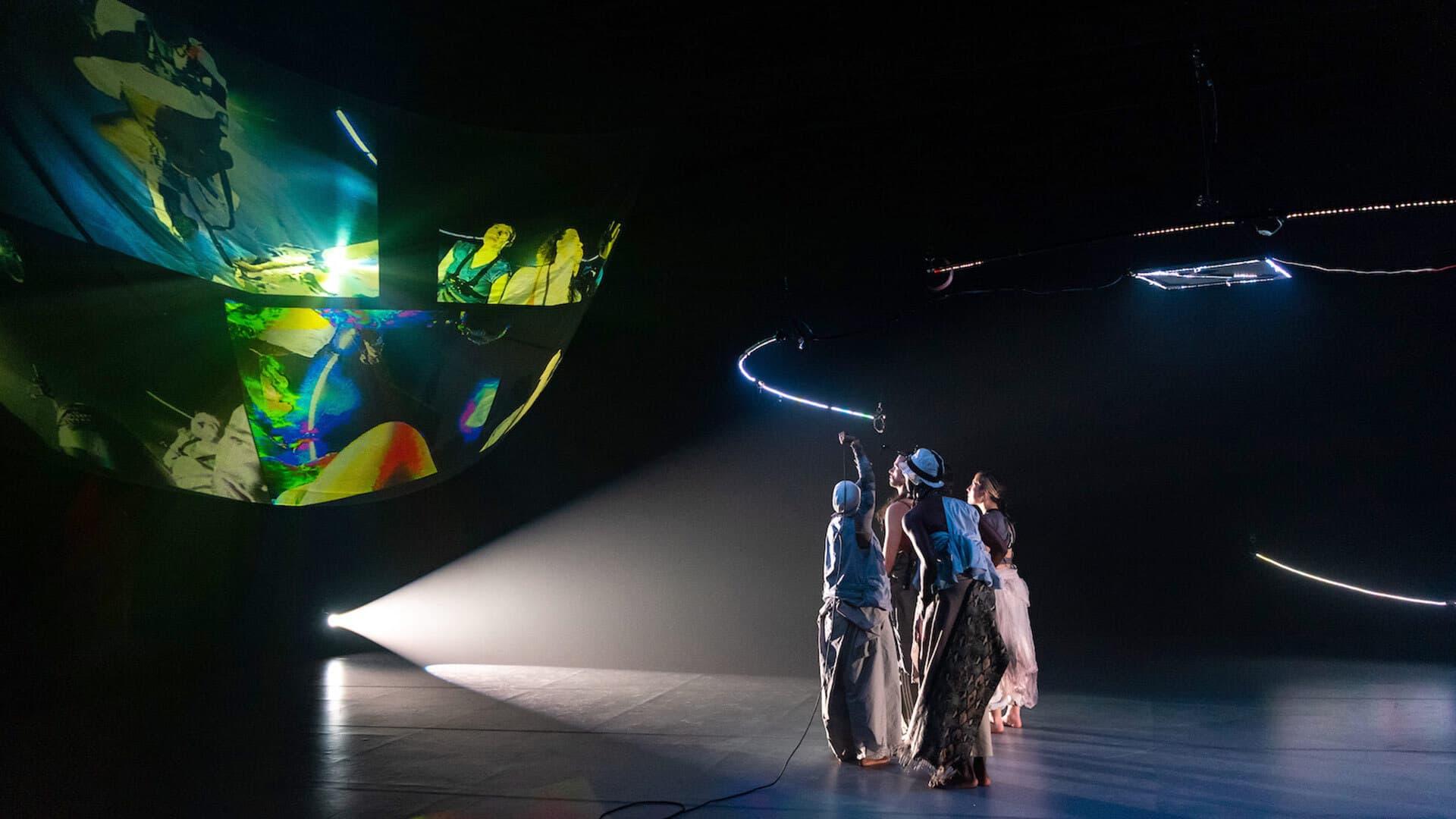Dance Work Seeks to Convey Toll of Climate Catastrophe
Clarice Artists-in-Residence Use Technology to Create a Disorienting New World

“SUPERCELL," by the artist duo slowdanger, premieres Thursday night at The Clarice. Dance Magazine called it a must-see show of the 2023–24 season.
Photo by Dylan Singleton
For Pittsburgh-based artists Taylor Knight and Anna Thompson, creating a dance piece that might get an audience to viscerally feel the impact of climate change took them not only into the studio—but to the office of a prominent UMD researcher.
Professor Emerita Dana Fisher of the Department of Sociology has been studying climate change activism for nearly 30 years, exploring just what it takes to tip the scales so governments, markets and civil society are moved to take action. Her insight helped inform Knight and Thompson, who make up the artist duo slowdanger, as they sought to envision the type of devastating experience that would serve as a mass wake-up call.
The artists’ latest dance work, “SUPERCELL,” is set amid the fury of a cataclysmic storm that threatens total destruction. Premiering tonight at The Clarice Smith Performing Arts Center, the work takes its title from a severe variety of thunderstorm characterized by persistently rotating updrafts that often result in tornadoes.
“Essentially, people are going to have to stare into the pit,” Thompson said. “And we'll have to deal with the forever change knowing that we didn’t take steps to mitigate it beforehand.”
Chosen by Dance Magazine as a must-see show of the 2023–24 season, “SUPERCELL” is part of a trilogy of works by the duo that explore the trajectory of an unnamed climate event, from preparation to aftermath. Performed by five dancers (including Thompson and Knight), the artists worked on the piece while in residence at The Clarice last year; it is part of Arts for All, the university’s initiative to partner the arts with the sciences, technology and other disciplines. “SUPERCELL” will go on tour following the UMD performances.
The dancers’ abstract representation of seeking calm in a storm “is similar to what we live with on a daily basis,” said Thompson. “How do we find quietness in a world where there's constantly a new influx of chaotic events or information that we're having to process individually and societally?”
Known for their creation of evocative and hypnotic worlds, slowdanger pulls in a plethora of technologies to build rich landscapes shaped by sound and lighting. For “SUPERCELL,” it collaborated with Set Designer and Creative Technologist Cornelius Henke of ProjectileObjects to capture a mood of disorientation and chaos, including an electronic score, distorted video of the dancers projected via live feed and audio from an actual supercell storm. All of the technology used in the production was upcycled from previous productions or rescued from throwaway objects, like a Home Depot bucket, a bike lock and a car remote.
During their residency at UMD, Knight and Thompson co-taught a graduate course with sound and media technologist Sam Crawford of the School of Theatre, Dance, and Performance Studies that they describe as a “collaborative tech space” to fine-tune their own sound design skills.
They also consulted kinesiology Associate Professor Jennifer Roberts in the School of Public Health, whose research focuses on built environments and environmental racism, to further develop ideas about the intersections of climate change and systemic oppression.
“It was incredibly exciting to be able to come from an artistic lens, but be in the room with these very accomplished educators and academics at UMD,” said Knight. “They have really been on the ground in some of these communities, seeing what's happening, and that absolutely informed the creation of our work.”
Artistic Planning Program Director at The Clarice Jane Hirshberg said “SUPERCELL” exemplifies how artists can translate society’s most complex, pressing issues: “They’re helping us experience, in our bodies, the many sensations that come with living on a changing planet,” she said.
Clarice Smith Performing Arts Center College of Arts and Humanities